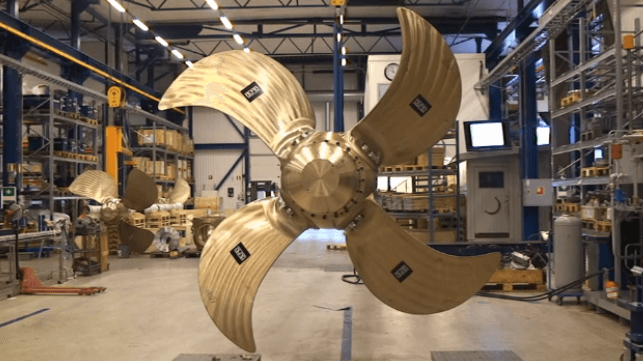Propeller Optimization Gains Importance as Focus Turns to Efficiency

The green transition in shipping is centered squarely on alternative fuels, but efficiency is critical as well. An efficient ship needs less energy to operate, and as the IMO's new emissions rules take effect, higher efficiency translates into lower cost of compliance. This has created a bigger role for suppliers like Berg Propulsion, the Swedish propeller builder known for maximizing efficiency. To learn more, TME caught up with Mattias Dombrowe, Business Manager – Electrical System Integration, Berg Propulsion to hear about how propeller configuration can lower fuel cost - and bring existing ships into line with new regulations.
TME: How is the decarbonization drive changing the propulsion market?
We see that decarbonization and efficiency are the way of the future, and the CII and EEXI are a big driver for us. Shipowners need to meet these requirements. If we look at the business model for propulsion changes in the past, we used to focus on the return on investment - but now it's more about what it takes to be allowed to operate under the new rules.
TME: What kind of efficiency gains are possible with changes to the propeller?
There is a wide range, depending on the vessel and the operating profile. The largest gains are possible when you have a substantial variation between the vessel's design speed and the speed at which it actually operates. If the ship has a propeller that is not optimized for its real operating speed, and then you install a new propeller blades optimized for that speed, then you make a significant gain. In that case, there will be a clear difference.
It really varies for each and every project, but on average, we see efficiency improvements in the range of six to 12 percent. We do not want to brag, but in one of our very best cases, the difference was 20 percent.
TME: What is the process for designing the most efficient propeller for a ship?
With propeller design, it's a bit like you're designing for a race car or a monster truck. Some ships operate a lot of the time at high loads and high speeds, and some ships go slower. The key is to understand the operation profile and design a propeller for the purpose.
TME: Berg Propulsion also works quite a bit with the offshore industry - can you tell us what you're seeing in that market?
On the offshore side, we see that more vessels are coming back into service. Owners are also starting to talk about new vessels again, because since 2014 there have been very few offshore vessels ordered. The average age for a "young" offshore vessel is now about eight years.
We see that the operators are reactivating their newest vessels and upgrading them to a higher standard. For example, we are delivering extra tunnel thruster packages for offshore vessel upgrade projects for higher DP notation, including electric motors and drives. Geographically, we see the Middle East and Southeast Asia as especially active currently.
We've also recently partnered with Singapore’s Evolution Concepts to design a zero-emission offshore support vessel using our propulsion solutions, and there will be more news on that project to follow.
TME: What does Berg's scope of work look like on an advanced newbuild project?
In the past, the design process would start with the main engines, which are the largest capital investment in the vessel. Diesel engine sizes are relatively strict, and you are boxed into different power levels: you either have the six cylinder engine, or you have eight cylinder engine.
With a battery-powered vessel, the cost per kilowatt hour of power is more expensive. If we are involved early in the design process and can save 100 kilowatts on the propeller side through better efficiency, then we can save 100 kilowatts on the electric motor, the drives, the gen sets and the batteries. When you can make these changes at the level of kilowatts, as you can with a hybrid propulsion system, you can save money. That is the concept that we are sharing with our customers - the value of having us involved early in the discussions. From the outset, we really try to understand how they're going to use the vessel so that we can tailor the full system to their needs.
Since Berg also offers electrical integration, we understand the full package for hybrid vessels, from the propeller wash all the way to the power generation. We build complete systems, including the operator's controls and automation. By making hybrid systems simple for the crew to operate, we can help them take advantage of each system's maximum efficiency.
